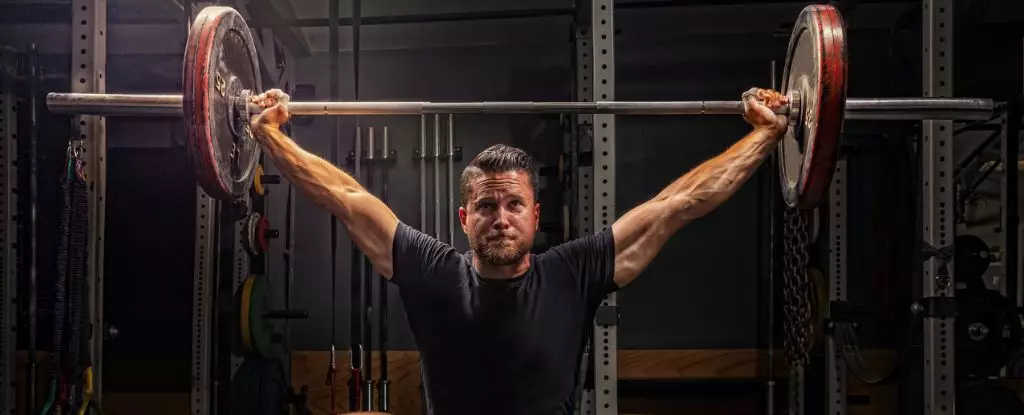The year 2021 etched a haunting mark in the annals of bodybuilding history, with over two dozen elite athletes succumbing to untimely deaths—a calamitous development that sent shockwaves through the sports community and beyond. These tragedies not only affect the athletes and their families but also raise troubling questions about the sport’s inherent culture and standards. The youngest among the deceased was only 27 years old, a stark reminder that the pursuit of physical perfection harbors profound risks.
Typically, research suggests that athletes live longer, healthier lives than average individuals; however, the alarming rise in early fatalities among bodybuilders paints a different picture. The stark reality is that as the world of bodybuilding propels itself increasingly into extremes—through micromanaged diets and aggressive training regimens—its participants may be paradoxically courting disaster.
Research Unveils Chilling Statistics
A groundbreaking study led by researchers at the University of Padova serves as a wakeup call, offering a deep dive into the grim nature of sudden deaths among bodybuilders. By examining over 20,000 male bodybuilders over an average span of eight years, the researchers documented 73 sudden deaths, with a staggering mean age of only 42. Among these deaths, heart failure emerged as the primary culprit, a castigation of the industry’s existing defensive mechanisms. It’s essential to recognize that even though the absolute risk among bodybuilders seems low, elite professionals face a drastically elevated danger—a staggering 14-fold increase in the risk compared to amateur counterparts.
The findings from those who have competed in prominent contests like the Mr. Olympia ‘open’ category are particularly disconcerting. Out of just 100 elite competitors analyzed, seven passed away due to sudden causes, five of which were directly linked to cardiac failures at a shockingly tender average age of 36. This ignites a critical conversation concerning the sport’s ethics and the responsibilities held by associations to ensure athlete safety.
The Underlying Health Crisis
The research underscores a disconcerting trend rooted in extreme lifestyle choices that underline the bodybuilding culture. Strenuous training, obsessive focus on dietary restrictions, and rampant use of performance-enhancing drugs fashion an extraordinarily harmful cocktail for cardiovascular health, putting immense strain on an athlete’s heart over time. It’s no coincidence that autopsies conducted within the study consistently revealed alarming cardiac changes, including left ventricular thickening and enlarged hearts.
These findings correspond with previous autopsy results that indicated bodybuilding athletes exhibited heart masses nearly 74 percent heavier than average, along with left ventricle thickness exceeding normal values by 125 percent. Such numbers are hard to dismiss and beg the urgent need for reevaluation of safety protocols within the sport.
A Call to Action for Safety Redefinition
The authors of this imperative study are clear and unabashed: immediate measures need to be instituted to address this burgeoning crisis. They advocate for the systematic introduction of automated external defibrillators (AEDs) at bodybuilding events to mitigate risks associated with sudden cardiac death—an initiative that appears glaringly absent in a sport so devoted to pushing human limits. The absence of significant autopsy data compounds this already pressing issue, leaving many questions unanswered.
While the passionate pursuit of athletic excellence is admirable, the dark underbelly reveals that it often comes at an unfathomable cost. The burden on cardiovascular health places professional bodybuilders at an increased risk, making it essential to challenge the prevailing notions of “sacrifice” in the sport. The narrative of relentless hard work, while profoundly motivating, must be balanced with accountability and safety.
Rethinking Bodybuilding Culture
Though bodybuilding has cultivated a culture of resilience and triumph, the reality is that the stakes may be far too high, often overshadowing the core principles of health and well-being. With the spotlight now shining brightly on sudden deaths, both the bodybuilding fraternity and its governing bodies must adopt an attitude of introspection and reform. Embracing health and longevity should supersede the unyielding pursuit of aesthetics and accolades.
As we brace ourselves for further revelations in this unfolding saga, the hope is that a paradigm shift will take root, ensuring that the voices of those lost in the fray are honored not through tears, but through action. The bodybuilding community must channel its competitive spirit not only into physical transformation but also into a vigorous renewal of safety and wellness standards for its athletes.


Leave a Reply